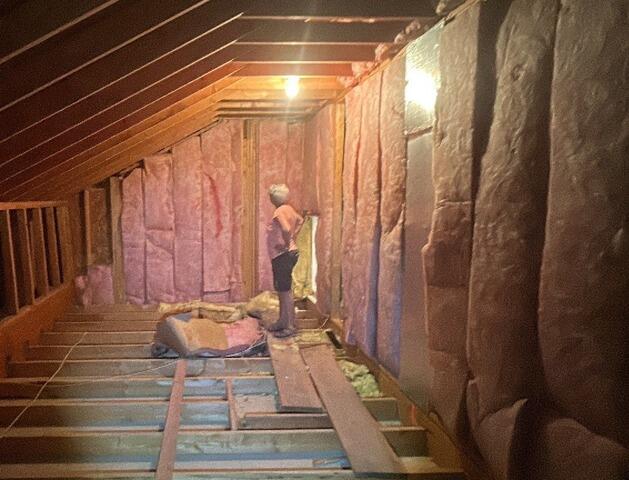
Problematic attic adjacent to living space
Whenever you have living space adjacent to an unconditioned (ventilated) attic the walls separating the two need to be handled the same as an outside wall. But that's not what we see here. This fiberglass insulation had been installed properly, but gravity eventually has its way and the insulation begins to fall away from the walls. Not only that, but open-faced fiberglass allows the air in the attic to wash right through it, resulting in the adjacent room becoming extremely hot in the summer and extremely cold in the winter.
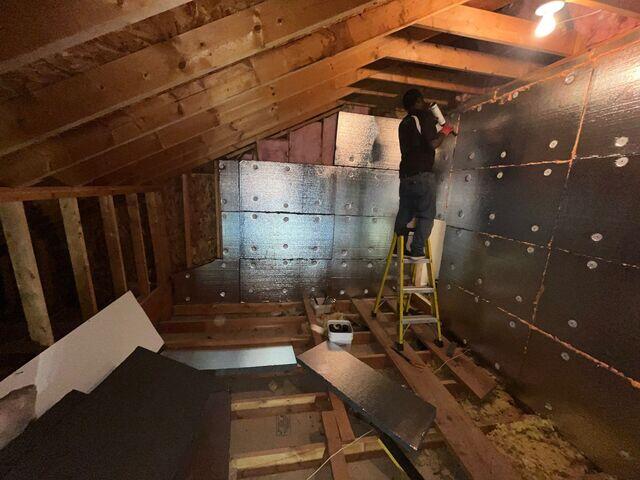
SilverGlo™
The old, ineffective fiberglass insulation is being sealed in with a new SilverGlo™ wall. Not only will this stop the "wind washing" effect of the fiberglass insulation, the SilverGlo™ will substantially beef up the insulation value, and will reflect the heat off the wall surfaces during summer time when attic temperatures often exceed 130 degrees. This will be a major comfort improvement, and a big saver of expensive utility costs.

Air leak sources
One of the biggest problems homes have is air leaks from the living spaces into the attic. This problem is especially bad in the winter when the heated air from the rooms below leaks into the attic. How does this happen, you may wonder? This is one way. There are many penetrations of the wall tops by electrical wires that are left unsealed by electrical contractors. Also, if you look closely, there is a thin crack between the top of the drywall and the wood. These exist at the tops of all the walls inside your house and add up for much of the air leakage. All of this has to be sealed to make a home airtight.
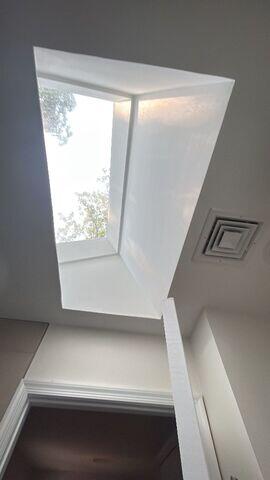
Skylights cause problems
Skylights can be a major source of heat transfer, out of the house in cold weather, into the house in hot weather, both unwanted situations. Dr. Energy Saver has an effective strategy for dealing problems due to skylights.
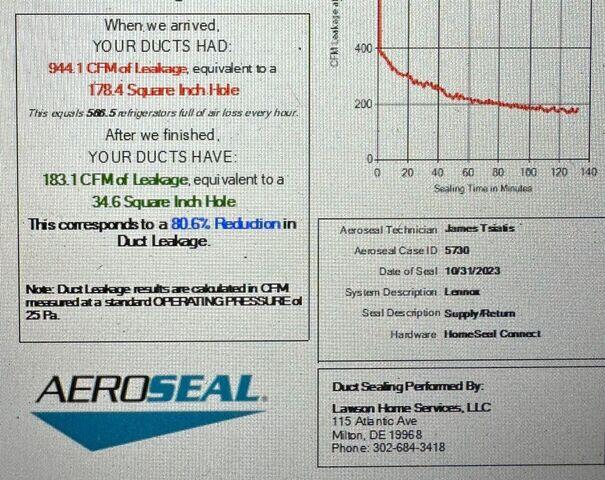
What a difference AeroSeal® makes
The unique thing about AeroSeal technology different from the conventional method of sealing the outside of the HVAC ductwork with mastic and duct tape is that AeroSeal® does its job from the inside out. This ingenious method was developed by a research scientist at the University of California. 80.6% of the air that was leaking out of the ducts, never reaching its intended destination, is now ending up providing heating and cooling in the living areas, instead of ending up leaking outside the house. That's a lot of savings adding up in a year. AeroSeal® pays for itself over a short period of time.
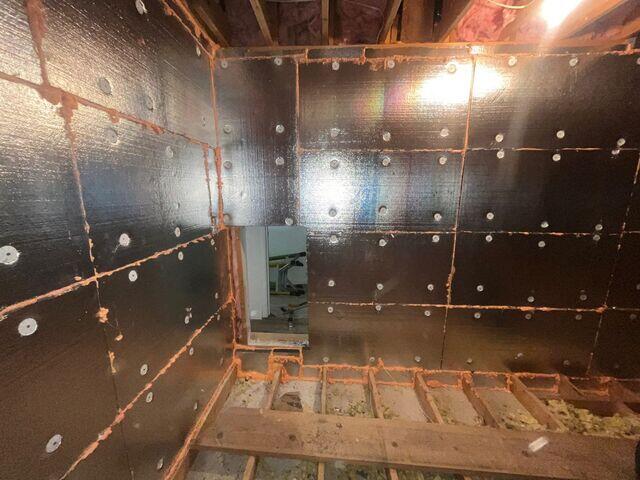
SilverGlo™ walls
Just look at these beautiful shiny walls. Its almost a work of art. You can bet the rooms on the other sides of these walls will be much more comfortable in the future.
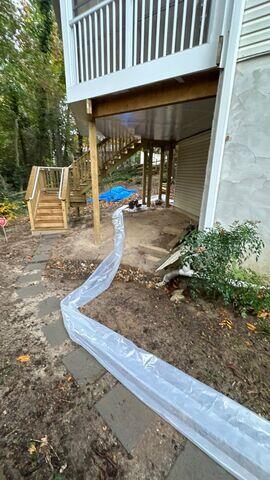
Over the river and through the woods....
In case you are wondering, this is just part of what you'll see during the AeroSeal® duct sealing process. These tubes carry away the excess sealing material inside the pressurized ductwork. It is interesting to note, AeroSeal process uses the leaks themselves to guild the sealing material into the holes and cracks, much like auto-fix tire sealant some people put inside their tires.

